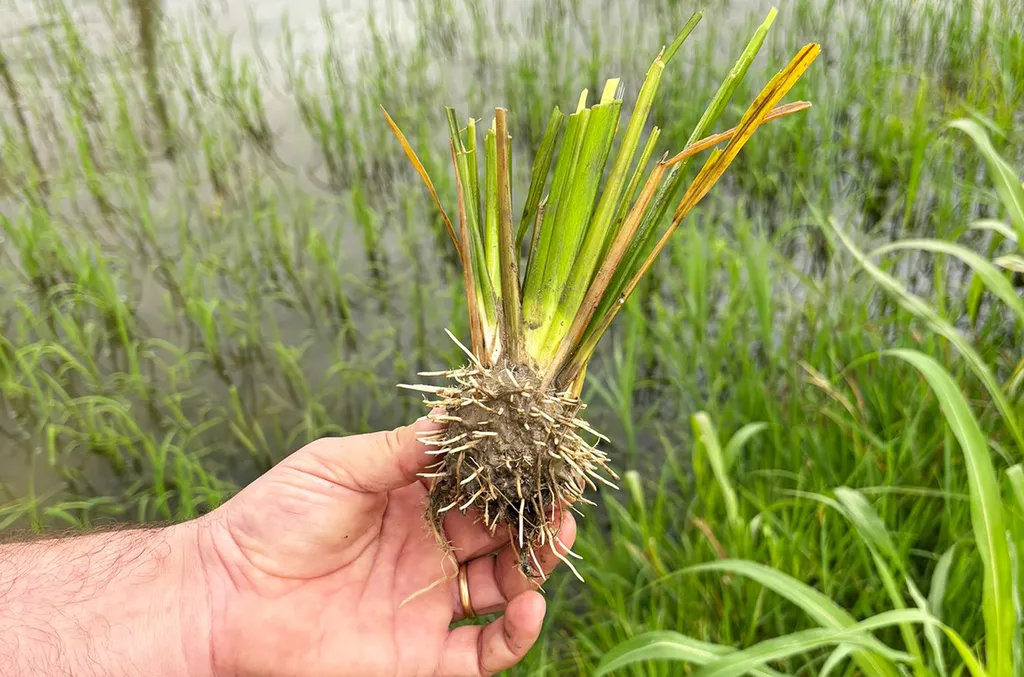In the quest to enhance the nutritional value and safety of rice, a staple food for over half the world’s population, researchers have made significant strides. A recent study published in the journal ‘Rice’ (translated from Italian as ‘Riso’) has uncovered valuable insights into the genetic basis of ionomic variations in rice, potentially revolutionizing breeding practices and improving crop quality.
Led by Gabriele Orasen from the DiSAA—Dipartimento di Scienze Agrarie e Ambientali – Produzione, Territorio, Agroenergia at the Università degli Studi di Milano, the research employed genome-wide association studies (GWAS) to analyze the grain ionome of 294 temperate and tropical japonica rice accessions. The study focused on 13 elements, including essential nutrients like calcium, iron, and zinc, as well as toxic compounds such as arsenic and cadmium.
The team subjected the rice plants to two distinct water management regimes: permanent flooding and limited watering. This approach allowed them to identify genetic variations that could enhance nutrient uptake and reduce toxicity under different environmental conditions. “Understanding how rice plants manage ionome under varying water conditions is crucial for developing resilient and nutritious rice varieties,” Orasen explained.
The GWAS identified 232 significant marker-trait associations (MTAs), with 87 exhibiting high R2 values and low p-values, indicating strong genetic correlations. Notably, 32 MTAs were consistently identified under both water management systems, offering promising candidates for marker-assisted selection. These genetic markers could help breeders develop rice varieties with improved nutritional profiles and reduced levels of harmful elements.
Moreover, the study highlighted co-localization regions for 60 MTAs, suggesting potential pleiotropic effects where a single genetic variant influences multiple traits. This finding could streamline breeding programs by targeting genes that simultaneously enhance multiple desirable traits.
For 14 MTAs with particularly strong statistical significance, the researchers identified potential candidate genes. Many of these genes were involved in transport, uptake, accumulation, detoxification, metal binding, and root architecture—functions directly related to the ionomic traits of interest. “These candidate genes provide a starting point for further research into the molecular mechanisms controlling the rice grain ionome,” Orasen noted.
The implications of this research extend beyond the agricultural sector. In the energy sector, rice cultivation often competes with bioenergy crops for land and resources. Enhancing the nutritional value and safety of rice could reduce the pressure to convert agricultural land to bioenergy production, thereby supporting sustainable energy practices. Additionally, the development of resilient rice varieties could stabilize food supplies, indirectly supporting energy security by ensuring a stable workforce and reducing socio-economic disruptions.
This study not only provides a foundation for improving rice breeding practices but also opens avenues for further research into the genetic and molecular mechanisms underlying the rice grain ionome. As Orasen and his team continue to unravel the complexities of rice genetics, the potential for developing superior rice varieties becomes increasingly promising. The findings published in ‘Rice’ mark a significant step forward in the quest for more nutritious, safe, and resilient rice crops, with far-reaching implications for global food security and sustainable agriculture.

